Mobile in Bloom
Posted on June 5, 2025 by Amelia Rose Zimlich
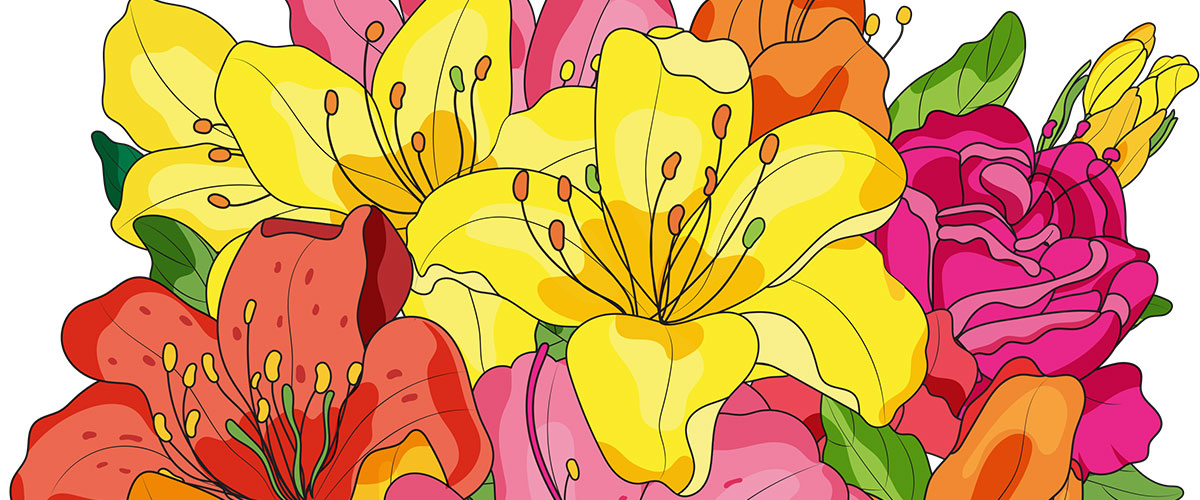
Thanks to one University of South Alabama professor, Mobile has azalea hybrids all
her own.
ILLUSTRATIONS BY CAROLINA PELÁEZ
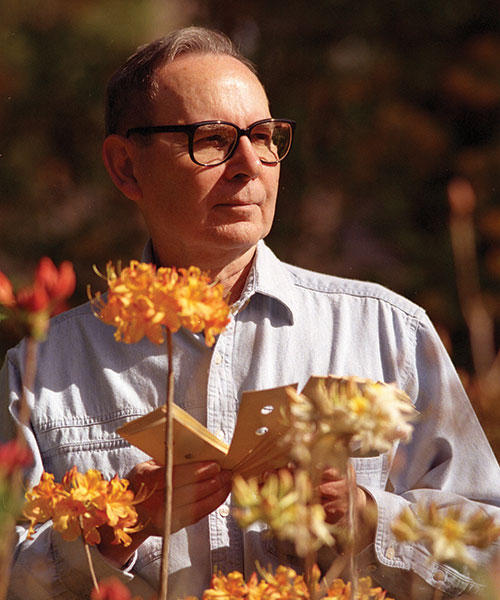
DR. EUGENE “GENE” JOHN AROMI JR., a University of South Alabama education professor, hybridized more than 1,000 azaleas before his death in 2004.
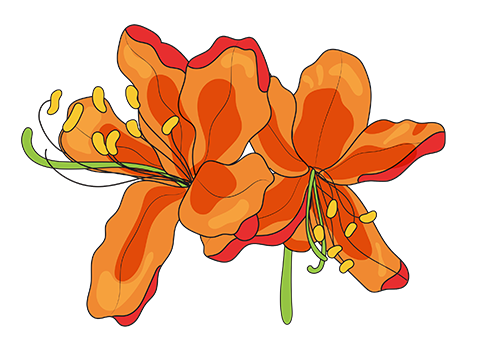
KEVIN PATRICK. Named after Aromi’s only son, who passed away as an infant.
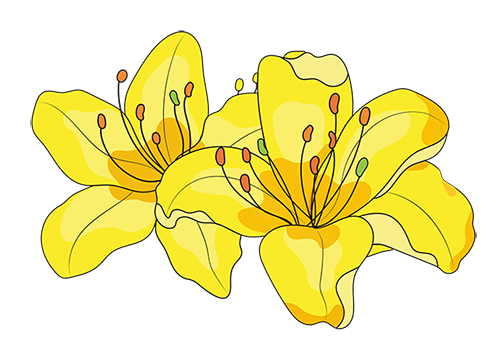
GLORY BE. One day another hybridizer, visiting Aromi’s backyard nursery, got a sneak peek at
a new azalea. The guest’s reaction: “Glory be!”
The name was set.
MY GRANDPA, DR. EUGENE “GENE” JOHN AROMI JR., was many things: A World War II veteran. An education professor at the University of South Alabama. An artist. But he is best known by one title: azalea hybridizer.
In the late ’60s, he began researching how to help the azaleas in his front yard thrive. A devotee of hands-on learning, he soon experimented with breeding azaleas to withstand Mobile’s hot and humid climate.
What started as a lunch break pastime between South classes bloomed into something else. My mom tells me how little pots under grow lights covered their entire foyer as he crossed evergreen and deciduous azaleas. The backyard became a mini nursery, the front yard a display of his blooming creations.
Grandpa’s azaleas benefited from his artistic touch. He crossed varieties to create gorgeous hybrids sporting flowers of different sizes and petal patterns in a rainbow of colors. He bred his flowers for heat tolerance, disease resistance and increased fragrance.
While Mobile has native deciduous azaleas — ones that lose their leaves in the fall — the azaleas that most of us are familiar with are the evergreens imported from Asia more than the Mobile Junior Chamber of Commerce integrated the flowers into the city’s identity by creating the Azalea Trail. In 1949, the first Azalea Trail Court was established — its legacy being the Azalea Trail Maids.
“The Azalea Trail created a big push in azalea popularity,” says Seth Allen, director of horticulture at Mobile Botanical Gardens, “mainly for the Southern indica type of azaleas, the old-fashioned ones that you typically think of in Mobile.”
Years later, Grandpa gave the Azalea City true local hybrids. One reason for his venture into horticulture — though he’d never taken a botany course — was his love of education, both teaching and learning. He started at South in 1966, teaching art education classes for 24 years before his retirement.
With curiosity and a thirst for knowledge, he began his azalea propagation, which lasted over 30 years until he passed away from lung cancer in 2004. In that time, he produced over 1,000 crosses.
“Dr. Aromi transferred several thousand seedlings to our nursery from his small backyard,” says Maarten van der Giessen, president of Van der Giessen Nursery in Semmes, the leading source for Aromi azaleas. “The day before he passed, he asked me to take his stud books,” van der Giessen says, referencing the books in which Grandpa kept track of each cross. “There are seven volumes describing over 100,000 flowering seedlings.”
I remember the Aromi Hybrid Azalea Garden opening in 2016 in Mobile Botanical Gardens. Seeing Grandpa’s flowers honored in the city where he did his work and within minutes of the University that he loved so much — and the Azalea Trail — was a full-circle moment.
Aromi azaleas appear in gardens throughout the South, even stretching to the U.S. National Arboretum in Washington, D.C. “Groups like the Azalea Society of America and the American Rhododendron Society, as well as gardens and arboretums throughout the Southeast, clamor for them,” says van der Giessen.
Grandpa named several of his hybrids after those close to him. One of my favorites is Jane’s Gold. Named after Grandma, it displays creamy yellow flowers with a yellow-orange blotch and pink-tinged tips.
There’s another I’m partial to: a double azalea with rich, purplish-pink flowers. It’s one of his final hybrids, named after his eighth grandchild — Amelia Rose.
Amelia Rose Zimlich ’22 is a native Mobilian and granddaughter of Dr. Eugene John Aromi Jr. She is the former editor of the Vanguard student newspaper and writes for Mobile Bay Magazine. She comes from a family of South graduates; her youngest brother is a current student

CORAL REEF. A flower created by Aromi and brought to maturity by Mobile nursery owner Maarten van der Giessen, who eventually found its name and genetic history in Aromi’s hybridization records

JANE’S GOLD. Named after Jane Aromi, his wife of 39 years. The two met in Tampa, Florida, where Jane was an elementary school teacher and Aromi was a professor, and were married in 1965.

AMELIA ROSE. A double azalea, with its stamens transformed into petals, resulting in a greater number of petals and a fuller appearance. Aromi had 10 grandchildren. The Amelia Rose was named after his eighth.
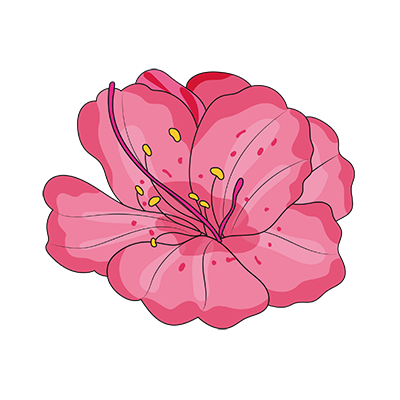
AROMI AZALEAS appear in gardens throughout the South, even stretching to the U.S. National
Arboretum in Washington, D.C.
Click here to view the current issue of South Magazine


